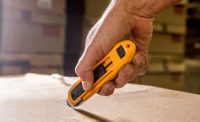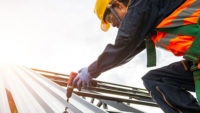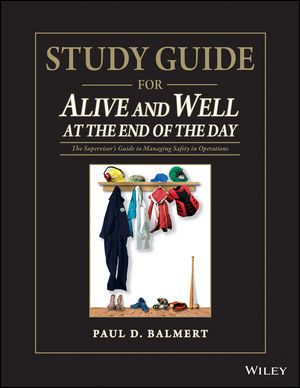There’s always a job to do — rain or come shine. Employers need to protect their workers from the rain even if there’s only a slight chance of precipitation. The slightest drizzle can lead to delays, mobility issues, and a range of safety hazards. With slick surfaces, mud, and poor visibility, doing virtually anything in the rain is difficult when workers aren’t wearing the proper gear.
Water-resistant clothing isn’t the same as waterproof. Both can be useful in the field, but every employer should learn how to differentiate between the two.
When to use different types of gear
Some clothing products claim to be water-resistant which makes it difficult to choose the right set of gear. Generally, an item is water-resistant if it protects the wearer from water for a brief time. However, water can eventually find a way to penetrate the barrier if the person is exposed to water for longer periods.
Water-resistant clothing is usually lightweight and breathable, which makes it great for physically demanding tasks and shifts. These items are also designed for maximum comfort. However, they offer minimal protection against the elements. If the person will only be outside for a short period or there isn’t a lot of moisture in the air, water-resistant clothing should keep workers safe and comfortable on the job.
Waterproof clothing is the more secure option. These items will protect the wearer from water regardless of how much time is spent in the rain, even though harsher conditions that include raging winds and downpours. The barrier is made so that water cannot penetrate the clothing in any way. This is the ideal choice for workers that spend a lot of time outdoors in variable conditions. The clothing is heavier and may even slow workers down in the field, but it’s usually worth it if they are working in extremely wet weather.
Hi-vis clothing is important in the rain
Many companies fail to understand all the risks that come with working in the rain. Keeping workers dry is just as important as keeping them visible. Rain and fog make it difficult for workers to see one another. That’s why it’s important to use high-visibility clothing when working in wet conditions. These items come with bold colors and reflective tape to help your team members see clearly when in the field. Workers need to see each other clearly on the job, especially when handling hazardous equipment or operating large pieces of machinery.
Rain and fog also reduce visibility on the road. If workers are near the road or a high-traffic area, hi-vis clothing reduces the chances of an accident or off-road collision. Drivers rely on visual markers when navigating work zones to ensure they aren’t getting too close to the action.
Wet conditions
Managers should focus on several factors when choosing hi-vis rain gear for their workers.
They should first ask themselves whether they need waterproof or water-resistant workwear depending on how wet the environment is and how long workers will be outside.
Consider gear that will cover most of workers’ exposed skin like long sleeves, gloves, high boots, and hoods. Elastic around the wrists, ankles, and waistbands will help prevent water from entering through these openings.
After choosing between waterproof vs. water-resistant clothing, decide on how visibility will affect your worker on the jobsite. American National Standard for High-Visibility Safety Apparel and Accessories ANSI/ISEA 107-2015 presents three Performance Classes of safety apparel based on the amount of visible materials and design attributes incorporated into finished configuration. There’s also the Types based on how and where the items should be used, indicated by the letters “O” for off-road, “R” for roadways and temporary traffic control, or “P” for public safety activities.
Class 1 hi-vis gear should only be used in situations where workers are separated from traffic speeds 25 MPH or less. It offers the minimum amount of hi-vis materials and off-road environments. It’s a great choice for workers that interact with slower moving vehicles. Class 1 garments are usually marked Type O.
Class 2 is considered the minimum level of protection for workers exposed to roadway rights-to-way and temporary traffic control (TTC) areas. These garments have additional hi-vis materials that give a better definition of the human form. This performance class is usually marked Type R or P.
Class 3 apparel must contain an even greater minimum level of hi-vis material compared to Class 2. These garments provide more visibility for the wearer in both complex backgrounds and through a full range of movement by the required placement of background, retroreflective, and combined performance materials on the sleeves and pant legs (if worn). Garments without sleeves, including vests, that are worn alone are not considered Class 3 protection. This is the ideal choice for those working next to the highway or toll road as they are marked Type R or P.
There’s also a Supplemental Class E which hi-vis items like pants, shorts, and bib overalls, do not qualify as meeting the requirements of the standard when worn alone. But when worn with a Class 2 or Class 3 garment, the overall classification of the ensemble is Class 3.
Companies may need to invest in more than one piece of hi-vis clothing. A simple jacket or vest may not be enough to keep workers visible when they are working outside in wet conditions. Reflective pants, gloves, hoods, and hats increase visibility, providing a full body silhouette so workers' extremities can be seen.
It’s also important to make sure every piece of clothing fits properly. Managers should choose a range of sizes and styles, so their workers can find items that fit their unique body size. If the clothing is too baggy or tight, it will reduce the person’s range of motion and make them less safe.
Some teams may want to coordinate the color of their hi-vis clothing. Workers will be easier to recognize if everyone is wearing the same color, such as light green, yellow, red, or orange.
Managers should refer to these tips when choosing safety gear for their team. Workers shouldn’t have to worry about getting hit by a car or not being able to see their own hands when working in the rain. The proper amount of hi-vis waterproof clothing can make a world of difference.




